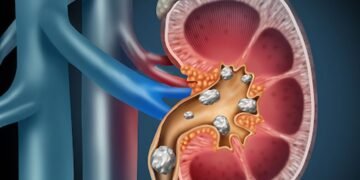Cervical dysplasia refers to abnormal changes in the tissue of the cervix, primarily affecting the vaginal portion of the cervix. This atypical tissue development is also known as cervical dysplasia, though the most accurate term is neoplasia.
The cervix functions as a boundary between the uterus and the vagina and is composed of three types of tissue: epithelial, muscular, and connective. The epithelial layer is heterogeneous and forms where the uterine and vaginal epithelium meet. This structural complexity makes the cervix particularly prone to various pathological conditions, one of the most common being cervical dysplasia.
During this condition, the structure of the stratified squamous epithelium changes: cells assume abnormal shapes, their nuclei increase in number and change in form. Despite these transformations, cell growth remains limited and does not breach the basement membrane. Meanwhile, the single-layer columnar epithelium remains unaffected.
Dysplasia is essentially a precancerous condition. Under certain circumstances, it may progress to a malignant process, occurring in about 30 out of 100 cases. The epithelial cells lose their usual structure and function, signaling the onset of potential cancer development.
The terms “dysplasia” and “cervical erosion” are often mistakenly used interchangeably. In truth, they represent different pathologies. In dysplasia, the structure of the tissue is disrupted at the cellular level. On the other hand, erosion refers to mechanical damage to the cervical tissue, which may occur due to an acidic environment or vaginal microflora, often during sexual intercourse or for other reasons, resulting in poorly healing lesions.
According to statistics, cervical dysplasia affects approximately 40 million women worldwide and accounts for 20 percent of all cervical pathologies.
The severity of dysplasia, or its stage, refers to the depth to which abnormal cells have spread within the cervical tissue.
There are three recognized stages
The first stage, or mild dysplasia, is a less severe form of the condition with minimal symptoms. The deformation involves about one-third of the epithelial layer and may occasionally include intermediate layer cells. In 90 percent of cases, first-stage dysplasia disappears on its own without the need for treatment. It does not have a lasting impact on reproductive health, and pregnancy is permitted one month after treatment.
 The second stage, or moderate dysplasia, presents with more pronounced cellular changes and affects up to two-thirds of the epithelial tissue. In about half of all cases, this stage may also resolve on its own. However, in 20 percent of cases it progresses to the third stage, and in 5 percent, it can develop into cervical cancer. This stage, too, does not negatively affect reproductive health, but close monitoring through regular testing every three to four months is essential, along with careful planning regarding conception.
The second stage, or moderate dysplasia, presents with more pronounced cellular changes and affects up to two-thirds of the epithelial tissue. In about half of all cases, this stage may also resolve on its own. However, in 20 percent of cases it progresses to the third stage, and in 5 percent, it can develop into cervical cancer. This stage, too, does not negatively affect reproductive health, but close monitoring through regular testing every three to four months is essential, along with careful planning regarding conception.
The third stage of cervical dysplasia is a severe, non-invasive form in which the entire mucosal layer is composed of deformed cells. In 50 out of 100 cases, this stage progresses to cervical cancer. Therefore, it is crucial to consult an oncologist when this level of dysplasia is diagnosed.
The degree of cervical deformation defines the course of the disease and determines the appropriate treatment approach.
During cervical dysplasia, regeneration of the epithelium is essential. To support this process, treatment typically includes the use of vitamins, folic acid, enzymes, prebiotics and probiotics, selenium, and omega-3 fatty acids.
Medication-based therapy is truly effective only in cases of Stage I cervical dysplasia. Stages II and III cannot be cured with medication alone. Surgical treatment methods are used for all three stages of cervical dysplasia.
Cauterization, as a physio-surgical method, can be performed using the following techniques:
- Liquid nitrogen (cryodestruction) – effective for treating Stage II and III dysplasia;
- Radio wave therapy – used for treating dysplasia of any stage;
- Electrocautery (electric current) – eliminates severe Stage III cellular changes;
- Laser treatment – quickly removes cervical defects without recurrence.
For more complex forms of cervical dysplasia, conization is recommended.
Conization involves the surgical removal of a portion of the cervix. This may be performed using a scalpel, laser, or radio wave method, depending on the course of the disease and the patient’s condition, as determined by the specialist physician.
The cervix may also be damaged as a result of inflammatory processes, allergic reactions, or a deficiency of vitamins A and E in the diet. These substances play an antioxidant role, and their deficiency often contributes to the development of dysplasia. Another cause of cervical dysplasia is hormonal imbalance, which can impair tissue regeneration. In addition, substances found in nicotine have a negative impact, as many of them inhibit the repair and renewal of cervical cells.
Treatment
In cervical dysplasia, epithelial regeneration (renewal) is essential. To support this, the following are prescribed: vitamins, folic acid, enzymes, prebiotics and probiotics, selenium, and omega-3 fatty acids.
Again, medication-based therapy is only truly effective in Stage I dysplasia, while Stages II and III require surgical intervention, which is applied across all stages of cervical dysplasia.
Cauterization as a physio-surgical method is carried out using various techniques depending on the condition. Liquid nitrogen (cryodestruction) is effective for treating Stage II and Stage III cervical dysplasia. Radio‑wave therapy can be used for dysplasia at any stage. Electrical current (electrocautery) eliminates complex cellular changes found in Stage III. Laser treatment allows for rapid removal of cervical defects without recurrence. For more severe forms of cervical dysplasia, conization is recommended. Conization involves the surgical removal of a portion of the cervix, which may be performed using a scalpel, laser, or radio‑wave technique. The deciding factor—based on the disease progression and the patient’s condition—is chosen by a specialist.
The main causative factor of cervical dysplasia is human papillomavirus (HPV), which acts at the cellular level, especially when the organism is weakened by ecological, physiological, or psychological stressors. This virus is quite dangerous, transmitted sexually as well as from mother to newborn during childbirth. In 90 percent of cases, it remains asymptomatic. However, in about 5 percent of infected individuals, it may lead to Stage I or II dysplasia within three years. Naturally, a key contributing factor is a weakened immune system, which prevents the body from combating the virus effectively; therefore, enhancing immunity is vitally important.
Cervical Dysplasia
Inflammation of the cervix, also known as cervicitis, can also be a facilitating factor for cervical dysplasia. This condition is typically caused by infections such as gonorrhea or chlamydia, or by allergic reactions to products like latex condoms or spermicides. Inflammation can weaken the cervical cells, making them more vulnerable to HPV infection and increasing the risk of developing dysplasia.
The cervix may also become damaged due to inflammatory processes or allergic reactions, compounded by dietary deficiencies in vitamins A and E. These vitamins fulfill antioxidant functions, and their insufficiency often contributes to dysplasia. Another cause of cervical dysplasia is hormonal imbalance, which impairs the regeneration of damaged tissue. Additionally, substances in nicotine have a negative effect, as many of them hinder the repair and renewal of cervical cells.
Treatment of cervical dysplasia necessitates epithelial regeneration. To support this process, patients are prescribed vitamins, folic acid, enzymes, prebiotics and probiotics, selenium, and omega‑3 fatty acids.
Medication-based therapy is truly effective only in Stage I cervical dysplasia. Stages II and III cannot be cured by medication alone. Surgical treatment methods are therefore utilized for all stages of cervical dysplasia.
Cauterization, as a physio-surgical method, is performed using several techniques depending on the case. Treatment with liquid nitrogen (cryodestruction) is effective for Stage II and III cervical dysplasia. The radio wave method is used to treat dysplasia at any stage. Electrical current is applied to eliminate complex abnormalities found in Stage III. Laser treatment allows for the rapid and recurrence-free removal of cervical defects.
For severe forms of cervical dysplasia, conization is recommended. Conization involves the surgical excision of a part of the cervix with a scalpel. It may also be performed using a laser or radio wave technique, depending on the course of the disease and the woman’s overall condition, as determined by a specialist.
Karazanashvili Robotic Center offers treatment for cervical dysplasia using methods that meet international medical standards.
Contact us: ☎ Tel.: 0322 23 40 23 ✉ Email: info@mmt.ge










